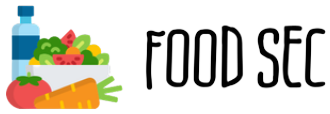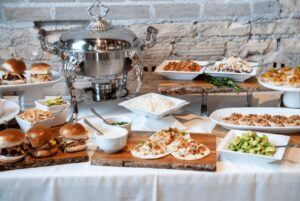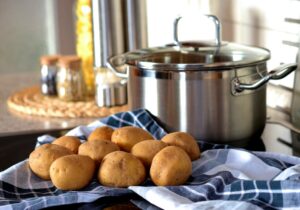Most of us hate waking up in the morning unless we have something to look forward to. Like a cup of freshly brewed coffee!
But unlike hot brew, cold brew isn’t something we usually whip up at home. Instead, we head to the nearest Starbucks or even McDonald’s for a refreshing but often overpriced glass of iced coffee. And while the concept of cold brew is nothing new, it has only recently gained popularity among coffee connoisseurs.
Consequently, restaurants and coffee houses are ditching their good old pitchers and switching to kegged coffee for cold brew on tap. While pitchers/jugs were not completely inefficient, keeping them refrigerated and pouring coffee with ice became challenging, especially with every second customer asking for a cold brew.
But what exactly is kegged coffee? And cold brew on tap? If all of that sounds like rocket science to you, continue reading to know what’s cool and what’s not among coffee lovers today!
What Is Cold Brew On Tap?
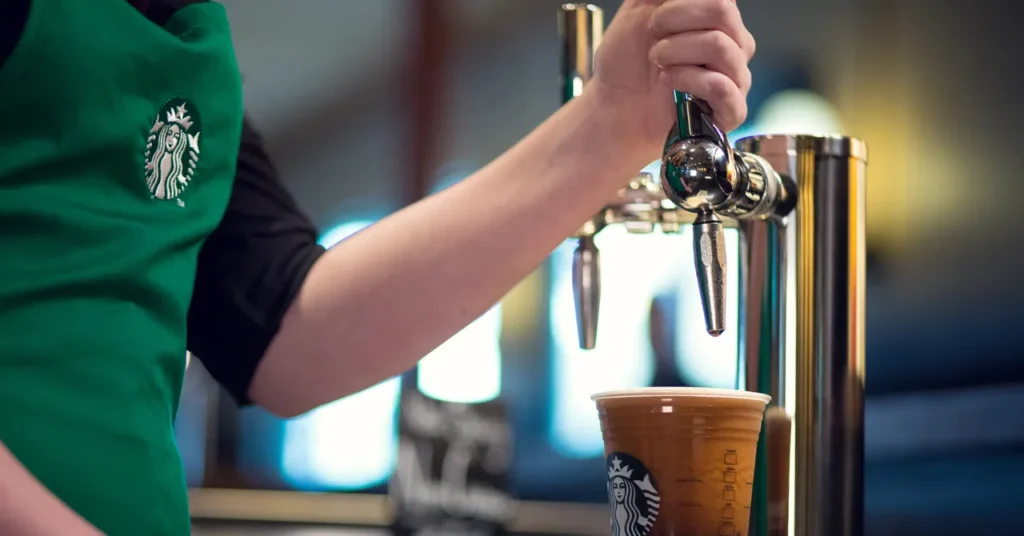
Source: wired.com
Cold brew on tap is basically cold brew, or nitro brew served on a draft dispensing system. The keg needs to be hooked to nitrogen, and cold brew is dispensed through a faucet. The taste and texture of the cold brew on tap varies with the type of faucet in use.
While the regular faucet produces the basic cold brew, the nitro faucet dispenses a creamy nitrogenated iced coffee!
Moreover, kegged coffee for cold brew on tap helps meet the growing demand for flavored iced coffee. All one needs to do is “tap” the keg with a coupler to dispense some delicious cold coffee.
All That You Need For A Coffee Drafting System
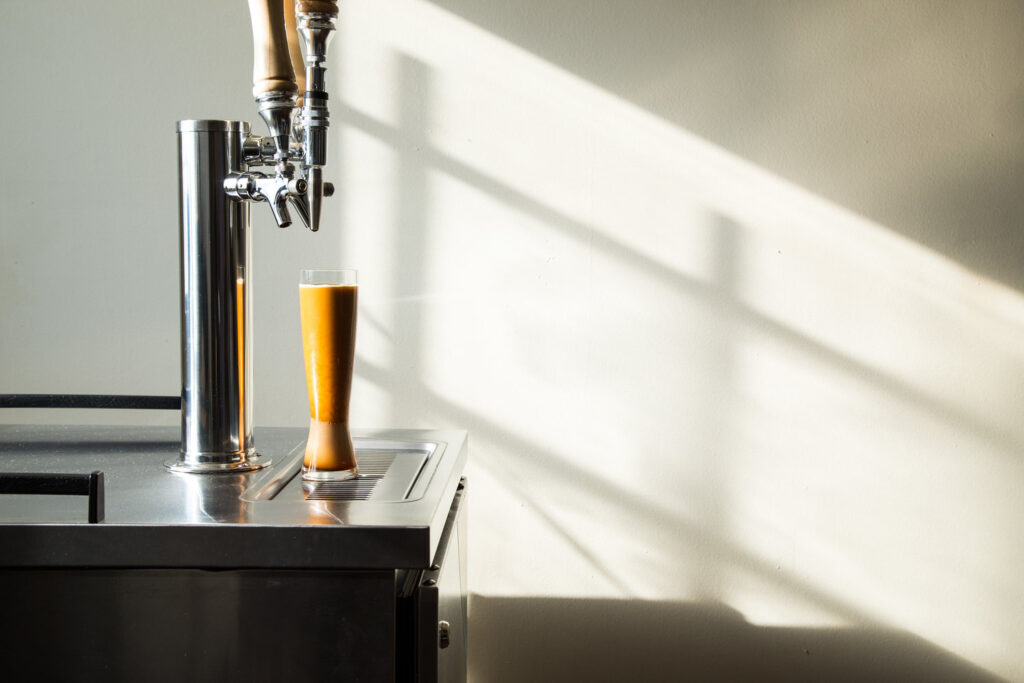
Source: joyridecoffee.com
First and foremost, you require a kegerator as well as a place to keep the keg cool. Typically, standard kegerators for coffee systems are available in two sizes and may boast either a stainless steel construction or a black vinyl finish.
Then you’ll need a keg, which needs to be stored in a cool place, preferably at 38°. Next comes the nitrogen gas infusion module (NIM). This is what turns cold brew into that creamy, frothy, nitrogenated coffee.
Thereafter, you’ll require stainless steel or nitro faucets along with a nitro primary regulator. For the latter, it’s best to opt for a high-pressure variant, which can go up to 120 PSI.
How To Set Up Kegged Coffee For Cold Brew On Tap?
Step 1
Screw the primary nitrogen regulator into the nitrogen cylinder. Then use the red valve to shut the regulator.
Step 2
Open the cylinder and set the pressure to 4-8 PSI for a regular brew or 30 PSI for nitro cold brew.
Step 3
Now connect the keg couplers to the kegs. This process will vary according to the brand of kegs you purchase. In the case of a regular 304 stainless snake coupler, attach it to the keg, tap it, and you’re good to go.
Step 4
For nitro cold brew, you’ll need a NIM as well and adjust it according to the desired nitro mix. You simply need to turn the NIM clockwise while pouring cold brew.
How To Maintain A Cold Brew On Tap System?
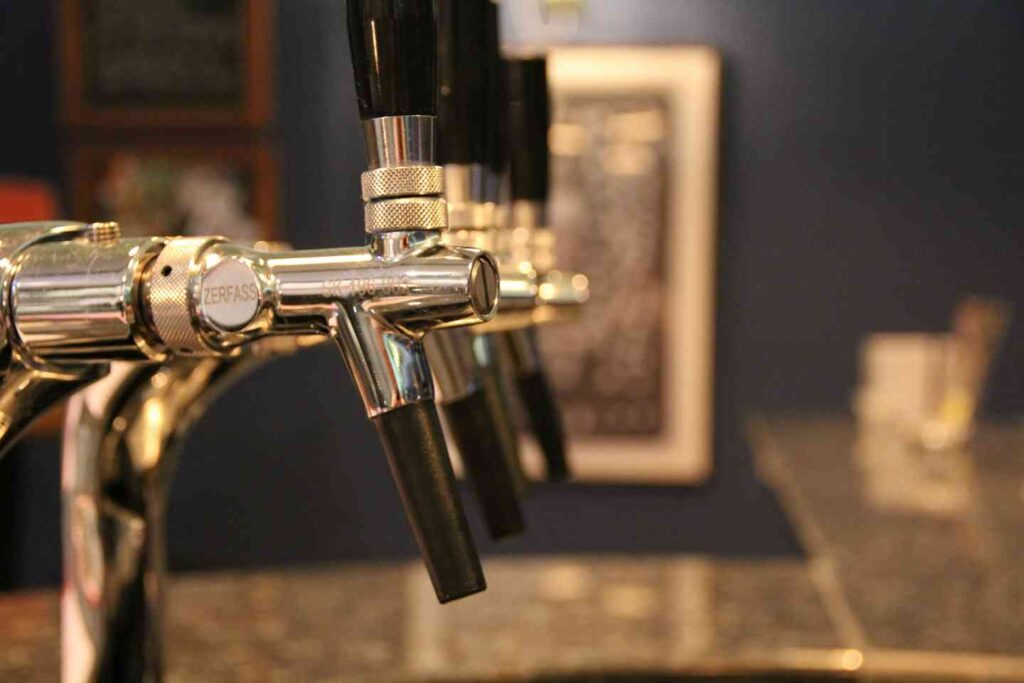
Source: dynamicrefrigeration.com.au
Considering how often a cold brew system is used, proper maintenance is required to ensure the equipment lasts long. Hence, it should be cleaned and inspected regularly, replacing damaged parts as and when required.
The nitrogen gas cylinders should also be checked and refilled whenever required. We further recommend cleaning the coffee lines every fortnight.
These steps will enhance the durability of your coffee draft system and the taste of your coffee!
Options For Serving Nitro Cold Brew On Tap
1. Bag-in-Box (BiB) Coffee
If you work in a setting with large crowds of iced coffee fans, the bag-in-box coffee is your best bet! BiB coffee is basically concentrated coffee, and the ratio of water to concentrate ranges from 4:1 to 15:1 or even higher. However, the industry standard is 5:1 or 7:1 in 1-gallon BIBs.
Note that a BIB cold brew concentrate of ratio 5:1 implies 5 gallons of water and 1 gallon of concentrate, making 6 gallons of the finished product.
Additionally, the BIB coffee packages are delivered fresh and offer longer shelf life and lower cost per serving than other alternatives of kegged coffee. Besides, you get a large variety of standard coffee flavors and grinds and can even get the coffee beans customized.
Once you’ve got your hands on the BIB concentrate, pop it into a BIB coffee dispenser, and connect it to a source of filtered water. That’s it, your mug of fresh cold brew is ready to serve!
Even cleaning and maintenance are no big deals with a BIB dispenser. Just disconnect the empty BIB bag, connect a new one, and use a BIB cleaning solution to keep things neat and tidy.
2. Ready to Drink (RTD) Coffee

Source: perfectdailygrind.com
RTD coffee packages are single servings of cold brew, commonly packed in cans and bottles. You can ask coffee distributors for your own signature blends or choose from the available flavors. We recommend KegForce for its large selection of artisanal coffee blends and beverages.
Further, if you want to brew your own hand-crafted cold coffee, start by brewing the coffee at ambient temperature for 8-16 hours. Once ready, pour the brewed coffee into a Corny Keg, typically used for craft beer and soda. You can find them in sizes of 2.5, 3, and 5 gallons.
3. Upgrading from Traditional Coffee
If you’re planning to upgrade your coffee brewing experience or want to increase efficiency to meet the demands of this beverage category, look no further. Ditch the slow drip coffee process, invest in a cold brew coffee drafting system, and explore different types and flavors of iced coffee!
You can even add a nitrogen gas infusion module for frothy coffee that tastes smooth and sleek! And while these upgrades may sound costly at first, the return on investment on the cold or nitro brew is huge.
So, get on the cold brew bandwagon today!
